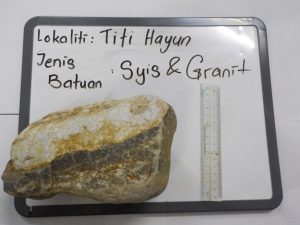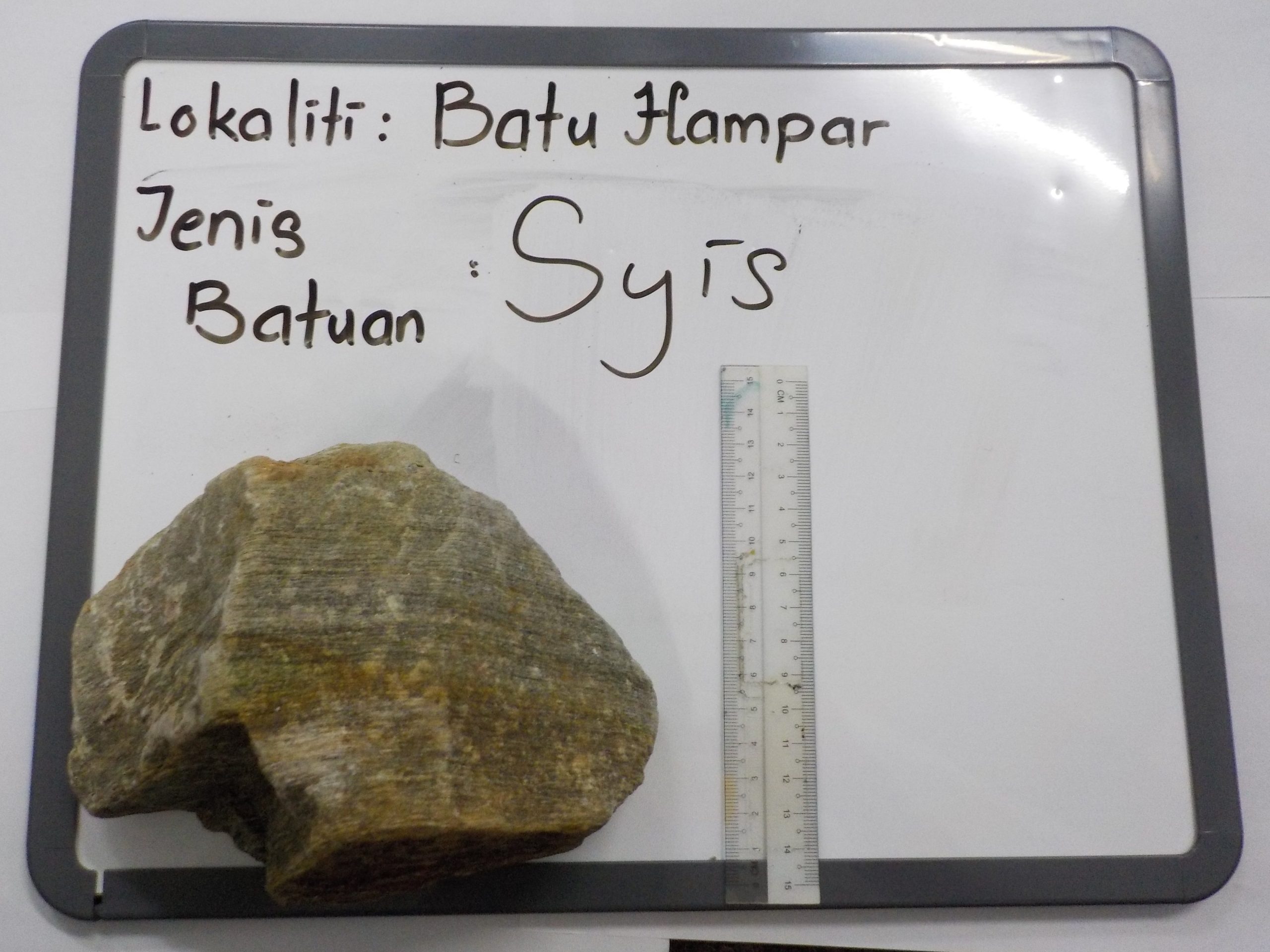Geologically, Jerai is part of the Jerai Formation and the Mahang Formation (Bradford, 1972). Metaquartzites, schists, and a few calcareous lenses make up the Jerai Formation, which dates back to the Cambrian period. It is estimated to be approximately 1.5 kilometres thick (Bradford, 1972). According to Jones (1970), Jerai Formation is made up of two parts: the lower part member and the upper part member. Quartz-mica, schist, and phyllite make up the lower part member’s about 900-meter thickness. Amphibole and garnet-bearing schist can also be found here and there. The upper member, on the other hand, has a thickness of around 500 metres and is composed primarily of quartz arenite with traces of feldspar grit (Lee et al., 2004).
The Mahang Formation is thought to overlay the Jerai Formation, and it shares the same age with the Ordovician-Silurian Setul Formation found on Langkawi Island and Perlis. There are three common types of rocks in this formation: arenite and silicate, argillitic, and limestone.
First, there is schist (figure 1). Mineral grains large enough to be seen with the naked eye make up schist, a foliated metamorphic rock. Sedimentary rocks such as shales and mudstones, which have been compressed, heated, and chemically active, typically form on the continental side of a convergent plate boundary. Minerals such as muscovite, biotite, and chlorite are formed from sedimentary rocks that have undergone intense metamorphism. Slate and then phyllite are gone through to metamorphose shale into schist.
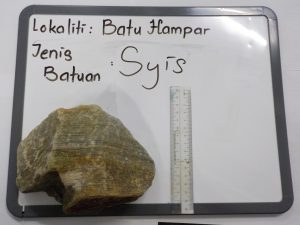
Next, there is pegmatite (figure 2) which comes from a magma’s final crystallization that produces this extreme igneous rock. This type of rocks has large crystals and minerals that are uncommon in other types of rocks, making them extreme. It is important that a rock’s crystals are at least one centimeter in diameter for it to be called a “pegmatite”. This rock’s name, “pegmatite,” has nothing to do with its mineral makeup. Quartz, feldspar, and mica are abundant in most pegmatites, making their composition similar to granite’s.
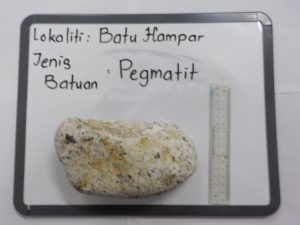
Then, there is sandstone (figure 3), a sedimentary rock that is made up of mineral, rock, or organic material with sand-size grains. Cement is used to hold the sand grains together, and a silt or clay-sized particle matrix are common to fill the spaces between the sand grains as well. This is one of the most common sedimentary rock types which can be found in sedimentary basins all over the world. The deposits are often transported to the basin by rivers, but they can also be transported by waves or wind.
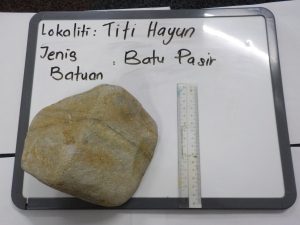
Other than that, there are also geologic contact rocks where in this case, the metamorphic and the igneous rocks are in contact here, which is called an intrusive contact because one rock has intruded into the other due to magma activity. Pegmatite and schist (figure 4), and granite and schist (figure 5) are some of the examples.

